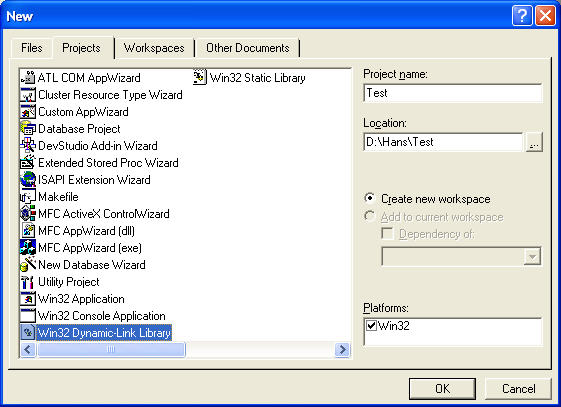

To do this, use TLS to provide unique data for each thread. WARNING − In multithreaded applications, make sure that access to the DLL global data is synchronized (thread safe) to avoid possible data corruption. Additionally, you should not call the FreeLibrary function when the process is terminating. For example, in the entry point function, you should not directly or indirectly call the LoadLibrary function or the LoadLibraryEx function. The entry point function should only perform simple initialization tasks and should not call any other DLL loading or termination functions. If you are using runtime dynamic linking, only the individual DLL will not load. When the entry point function returns a FALSE value, the application will not start if you are using load-time dynamic linking.
#Create a dll file in c# code#
The following code is an example of the DLL entry point function. You can use the entry point function to initialize or destroy data structures as required by the DLL.Īdditionally, if the application is multithreaded, you can use thread local storage (TLS) to allocate memory that is private to each thread in the entry point function. The entry point function is called when processes or threads attach themselves to the DLL or detach themselves from the DLL. When you create a DLL, you can optionally specify an entry point function. This is important when you develop multiple-language versions. It helps you call these functions easily.Īpplication logic − In runtime dynamic linking, an application can branch to load different modules as required. Startup performance − If the initial startup performance of the application is important, you should use run-time dynamic linking.Įase of use − In load-time dynamic linking, the exported DLL functions are like local functions. The following list describes the application criteria for choosing between load-time dynamic linking and runtime dynamic linking − When you use runtime dynamic linking, you do not need an import library file. After the DLL is successfully loaded, you use the GetProcAddress function, to obtain the address of the exported DLL function that you want to call. In runtime dynamic linking, an application calls either the LoadLibrary function or the LoadLibraryEx function to load the DLL at runtime. When you do this, the linker will provide the system with the information that is required to load the DLL and resolve the exported DLL function locations at load time. To use load-time dynamic linking, provide a header (.h) file and an import library (.lib) file, when you compile and link the application. In load-time dynamic linking, an application makes explicit calls to the exported DLL functions like local functions. When you load a DLL in an application, two methods of linking let you call the exported DLL functions. First, we will discuss the issues and the requirements that you should consider while developing your own DLLs.


 0 kommentar(er)
0 kommentar(er)
